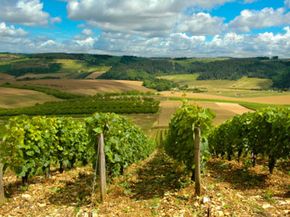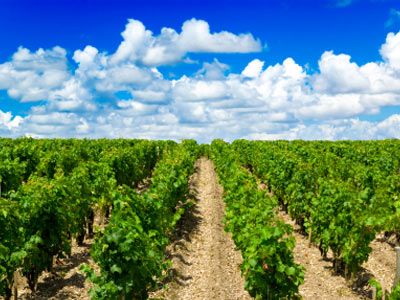It's New Year's Eve. You have your fancy outfit, a date and a party to attend. What's missing? The bubbly! There's nothing like a big bottle of champagne to help you celebrate.
Most people are familiar with the characteristic bubbles or specific flavor of champagne, but there is so much more to learn about this famous French wine than just what makes it bubbly. It comes from the Champagne region of France, which is one of the most heavily praised and restricted wine regions on Earth.
Advertisement
Countries throughout the world use Appellations of Origin to mark their wine territory. The appellation for France is known as Appellation d'Origine Contrôlée (AOC). Wines bearing this label have been subjected to strict rules. There are 35 rules French winemakers must follow, but these are the most important concerning wine produced in the Champagne wine region:
- Wine must come from a designated area of 84,000 acres (34,000 hectares).
- Pinot Noir, Chardonnay and Pinot Meunier are the only grapes that can be used and blended to make champagne.
- You may only harvest and press a certain number of grapes at one time.
- Vine restrictions include spacing, height, pruning and density.
- All grapes must be harvested by hand.
- You must age the product for a specific amount of time [source: wine-pages, Le Champagne].
For centuries, Champagne has been limited to its strict territorial boundaries, but in the early 2000s, the French started realizing it might be time to expand. The global market for champagne is quite large -- it's been hard to manage while picking grapes by hand! The Institut National des Appellations d'Origine (INAO) has approved a tentative plan to increase the area where grapes can be grown and still maintain the name Champagne [source: Gaffney]. Needless to say this has caused quite the controversy in the region. It will take years to sort out the logistics, but there's a demand for champagne, and France is trying to meet it.
Read on to learn about the region's history and culture, and find out how the center of Champagne came to be.
Advertisement


